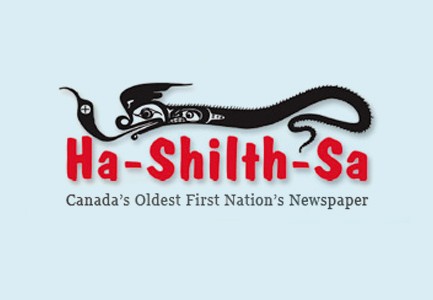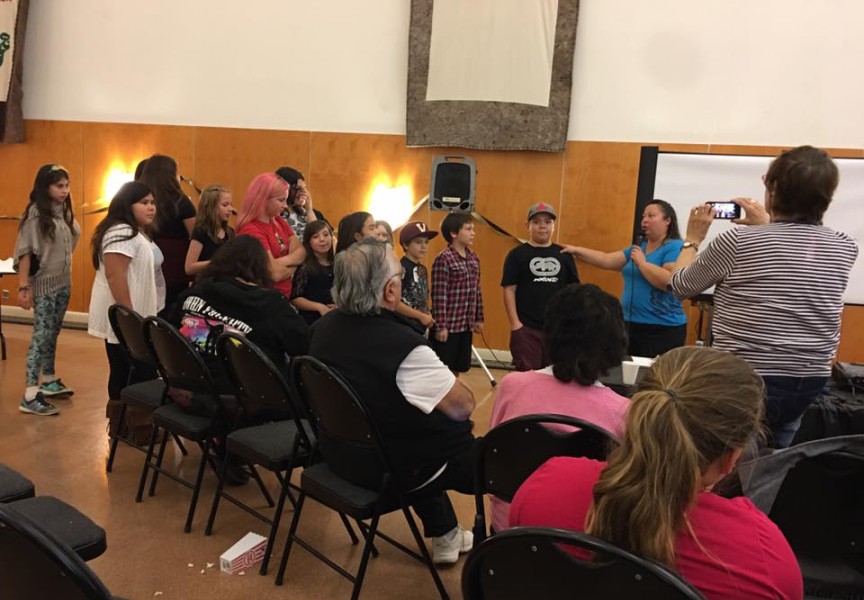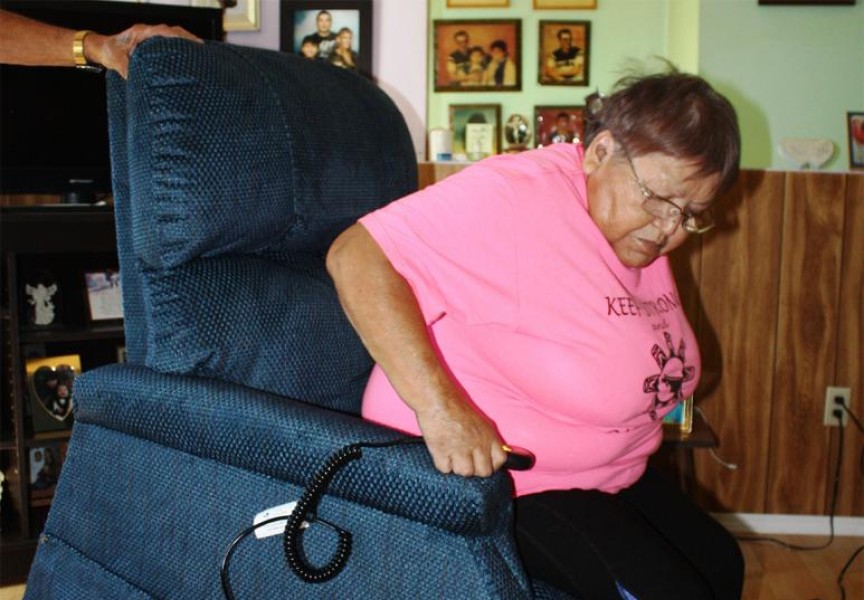Canada’s Oldest First Nations newspaper celebrates 40 years of bringing news to members of the Nuu-chah-nulth Nations this month.
The first four-page edition rolled off the presses on Jan. 24, 1974, and it did not even have a name, according to an editor from those early days Bob Soderlund.
“They held a contest to find a name,” Soderlund recalled. “It was the late Chief Cecil Mack of Toquaht, the father of Bert Mack, who suggested Ha-Shilth-Sa or ‘interesting news.’”
Even a quick study of that initial offering reminds the reader of how far Nuu-chah-nulth Nations have come in 40 years. In fact, even the word Nuu-chah-nulth does not appear anywhere.
In January 1974, an organization known as the West Coast District Council of Indian Chiefs was in the process of taking over services, funding and programs from the federal Department of Indian Affairs on behalf of “the 13 bands of the Nootka Nation.”
Soderlund said the driving force behind what would become Ha-Shilth-Sa was the late Wahmeesh George Watts, who chaired the District Council, which soon evolved into the Nuu-chah-nulth Tribal Council.
Ken Watts, son of George, is now the elected vice-president of NTC. Watts said his father always stressed the important role Ha-Shilth-Sa played.
“He recognized that it was a foundational part of our government, in terms of communicating with our people,” Ken said. “He drilled it into my head that it’s not the political representatives – it’s every Nuu-chah-nulth person – they are the owners of the Tribal Council. And it’s important to get the information out to them.”
Soderlund said the council received a Local Initiative Program grant to get started.
Jan Broadland, who had worked as a reporter at the Alberni Valley Times, was hired as editor (“She was the only one with newspaper experience”).
Jill Lewis, who had previously been hired by the Council as a secretary, added duties of reporter/photographer and advertising rep.
While Soderlund would later assume the role of managing editor, his initial duties were in the darkroom, and that was on a volunteer basis.
“George asked me because I did photography as a hobby. I did it for a couple of years. I had a real job at the time.”
In those days, Ha-Shilth-Sa staff typed articles, created ads and printed photographs, then had the material typeset and pressed at the Alberni Valley Times.
The District Council was expanding rapidly at the time. The first edition advertised a number of job postings, and also put out the call for reporters and contributors.
Soderlund said Ha-Shilth-Sa found those reporters and contributors over the next few years, but in 1976, the paper came to a crisis point, and the Council had to make some critical decisions.
“The LIP grant ran out after two years and everybody got laid off. By that time, I knew how to do it and stayed on as a volunteer, and kept the paper going – one every couple of months.”
Soderlund said the Council eventually decided to find funding to keep alive what had become a critical communication tool.
By now, Ha-Shilth-Sa had become that unifying force among the scattered Nuu-chah-nulth communities, as envisioned by George Watts, Soderlund said. And there was always plenty to talk about, he added.
“[George Watts] wasn’t afraid to go to Ottawa and push buttons and pressure people, to stand up in front of a microphone and tell people how it was,” Soderlund said.
By the late 1990s, when Soderlund decided to retire as managing editor, the treaty process was in progress, as was the issue of aboriginal fisheries rights. David Wiwchar, who grew up on the Snuneymuxw First Nation reserve and had extensive media experience, proved to be uniquely qualified to take the helm.
“I was senior reporter at the Nanaimo Daily News, and when I heard about the opening of the managing editor position I decided to apply. I looked at it as working for a reason and not just a living,” Wiwchar said.
“At Ha-Shilth-Sa in 1998, the treaty process was in full swing, so I was deeply involved in covering those discussions and negotiations, and had the rare experience of seeing it all first-hand.”
Among the many stories Wiwchar uncovered was the misuse of nearly a thousand blood samples taken from Nuu-chah-nulth people for a study on rheumatoid arthritis. The study went nowhere, but the lead scientist later used the 843 samples in unrelated research that earned him world fame and a top job at Oxford University.
“It was a study that Nuu-chah-nulth neither knew about nor had consented to, and it became a huge issue that is still talked about today,” Wiwchar said.
Wiwchar’s revelations in Ha-Shilth-Sa hit the scientific community like a bombshell, and the Nuu-chah-nulth case study is still cited in academic discussions surrounding informed consent and aboriginal populations.
In 2006, Wiwchar made the leap to A-Channel as a video journalist. At that time, Debora Steel lived in Edmonton, where she served as editor-in-chief of an aboriginal news service with five newspapers and one news magazine.
“I used to love reading Ha-Shilth-Sa. We always got the newspaper at our offices in Edmonton,” Steel said.
“My husband’s family is from [Vancouver Island]. I had always thought that, if someone decides they don’t want to be editor of this newspaper any more, I’m going to apply. Then, lo and behold, Dave made the move to A-Channel.”
A few months later, while putting together an edition of Windspeaker, she spotted the ad she was waiting for.
“I put in my resume – right now – and within a month, I was here.”
Steel said it was a steep learning curve and there wasn’t a whole lot of time to acclimatize.
“Within two months, there was the Final Agreement for Maa-nulth. That was pretty exciting. I had covered the Nisga’a Treaty in New Aiyansh in 1998, and here I was again.”
Steel said fisheries litigation has been another major focus.
“That’s been a huge thing to be able to cover, especially since Nuu-chah-nulth have won every time they go to court.”
But even more exciting, she believes, is that the Nuu-chah-nulth assertion of rights encompasses the responsibilities of ownership and the stewardship of resources.
“That’s what has always impressed me about the Nuu-chah-nulth people.”
Steel soon realized, however, that if Ha-Shilth-Sa was going to stay relevant to Nuu-chah-nulth members, she would have to develop a website accessible to the growing number of people using tablets and smartphones, as well as a social media presence.
“Technology has changed the way we read news. We need it to be so immediate, and every two weeks is just not fast enough any more. The website allows us to do so much more.”
Nowadays the website receives about 20,000 visits each month and the Ha-Shilth-Sa Facebook site has more followers than subscribers to the paper edition. There is even live video streaming of major events, such as the Dec. 11 “Hunger Experiments” conference at Maht Mahs. Steel kept followers updated throughout the day on Facebook and Twitter.
Steel said she readily cooperates with the two Port Alberni newspapers. It’s not about fighting for scoops; it’s about making sure the story is told accurately.
“My job is to communicate the Nuu-chah-nulth perspective, through the paper, and I see the extension in the local news outlets, so I work with them,” Steel said.
It’s a whole different market, she explained. Nuu-chah-nulth people live on the West Coast, in remote communities and cities all over the Vancouver Island, the Lower Mainland and beyond, and they want to read Nuu-chah-nulth news.
“I think my dad would be really impressed with how far Ha-Shilth-Sa has come in 40 years, with a website and a Facebook page. And they manage to reach people on a live basis, too,” Ken Watts said. “One of the things he always talked about was celebrating our successes, and focusing on the positive stories.
“We’ve had some amazing things happen through the Tribal Council – taking on Child and Family Services and post-secondary education, just to name a few. Nuu-chah-nulth were one of the first in Canada to do that. I guess Ha-Shilth-Sa was one of the first, too.”






